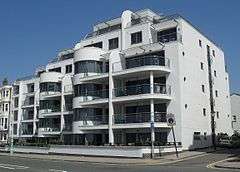Kemp Town

Kemp Town is a 19th Century residential estate in the east of Brighton in East Sussex, England, UK. Conceived and financed by Thomas Read Kemp it has original estate is now demarcated by the modern Kemp Town Conservation Area as defined by the local authority, Brighton and Hove City Council.[1]
The estate was designed by Charles Busby and Amon Henry Wilds and constructed by Thomas Cubitt. Building work started in 1823 on Arundel Terrace, Chichester Terrace, Lewes Crescent and Sussex Square. Chichester Terrace incorporated the earlier Chichester House. In 1837 Thomas Kemp fled the country to escape his creditors. The project continued under Cubitt with the support of the Fifth Earl of Bristol. It was completed in 1855, with Sussex Square larger than London's Grosvenor Square and at the time the biggest housing crescent in Britain. The original estate is a good example of Regency architecture.
At around the same time, Brighton's neighbour Hove was expanding on the western boundary of Brighton, with the development of the Brunswick Estate which featured similar though smaller Regency-style properties, and its own market, police station, riding school and (as in Kemp Town) small mews streets for staff housing. These mews now provide very attractive private accommodation which can fetch similar prices to flats in the grand houses they once served.
Below and to the south of Kemp Town, at beach level, is now Brighton Marina and a proposed redevelopment at Black Rock, site of a former lido.
Gallery
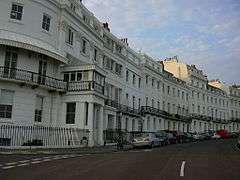 West side of Lewes Crescent
West side of Lewes Crescent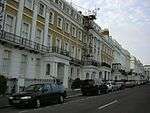 West side of southern half of Sussex Square
West side of southern half of Sussex Square Blue plaque commemorating Thomas Cubitt's residence at 13 Lewes Crescent
Blue plaque commemorating Thomas Cubitt's residence at 13 Lewes Crescent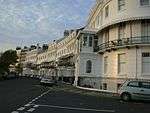 East side of Lewes Crescent
East side of Lewes Crescent Arundel Terrace
Arundel Terrace Back of Sussex Square
Back of Sussex Square
References
Coordinates: 50°48′58″N 0°06′40″W / 50.81611°N 0.11111°W
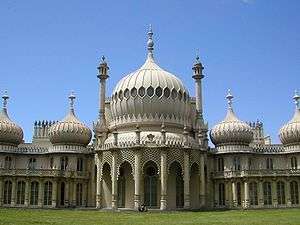
.jpg)
.jpg)
